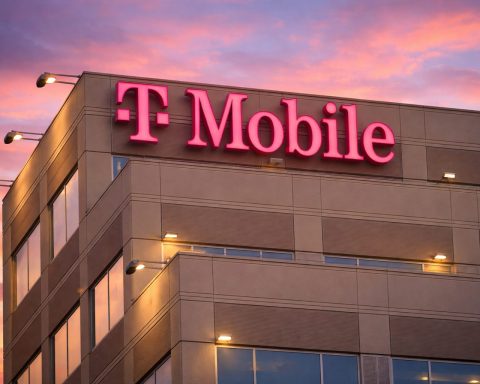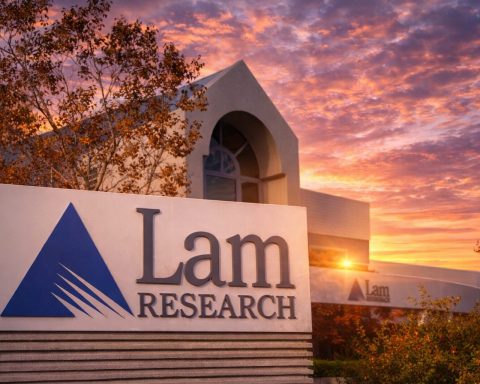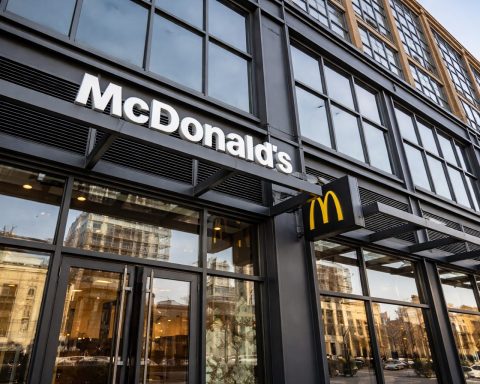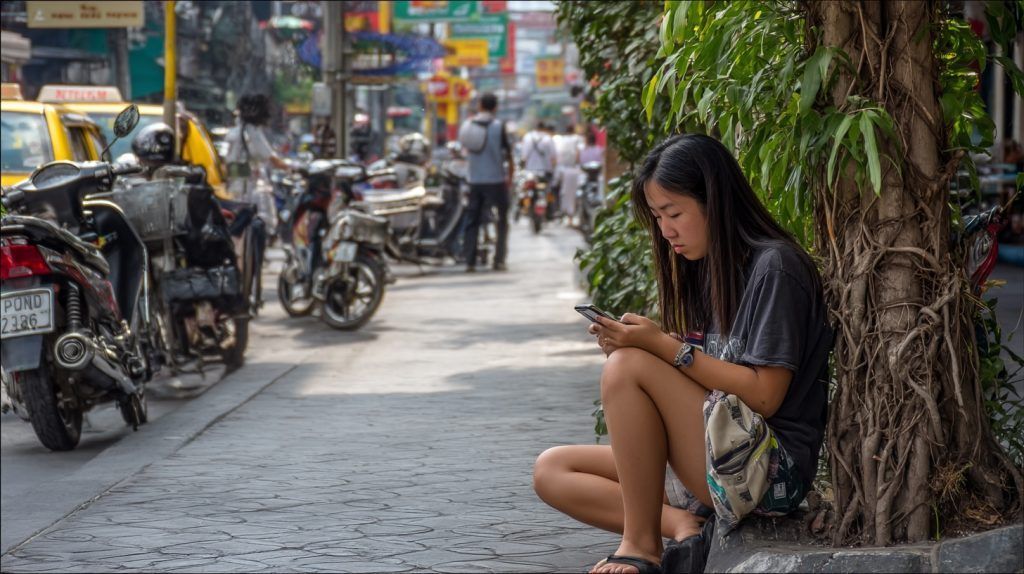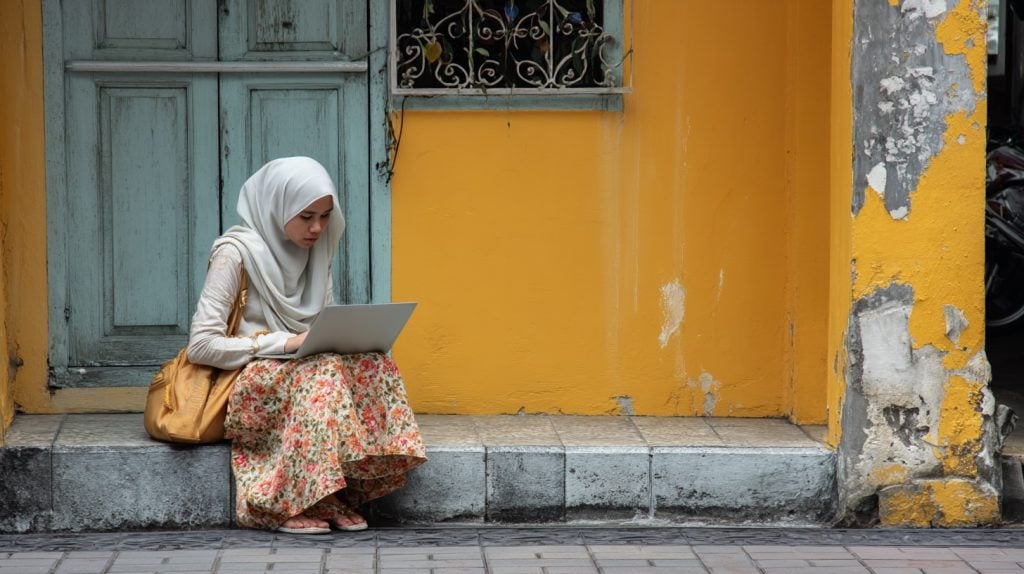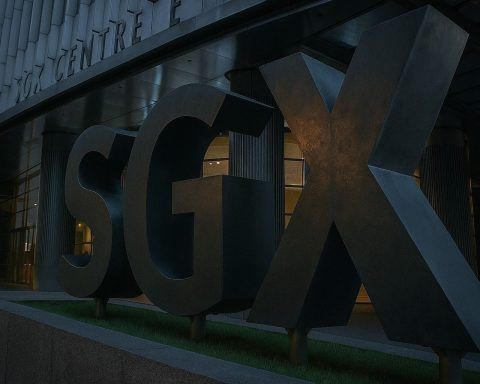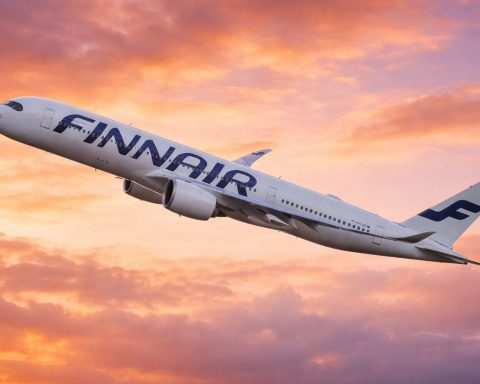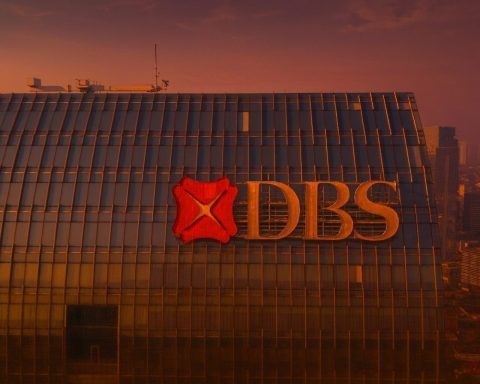- The nationwide fiber backbone, the Next Gen NBN, uses NetLink Trust for passive infrastructure and a structural separation that lets Singtel, StarHub, and M1 jointly serve over 98% of fixed-line subscribers.
- Singapore’s average fixed broadband speed was about 336 Mbps in January 2025, making it the fastest globally.
- The government plans a 10 Gbps symmetric nationwide upgrade by 2026, with 10 Gbps trials already underway by MyRepublic.
- By end-2024, 5G coverage was effectively island-wide, with StarHub reporting >99% outdoor coverage and Singtel delivering full 5G across MRT underground lines.
- 3G networks were retired in 2024, with M1 shutting down in August 2024 and Singtel and StarHub following in November 2024.
- IMDA requires at least 99.9% monthly network availability for fixed broadband, with a May 2024 StarHub incident dropping it to 99.89%.
- Mobile data speeds are typically 40–60 Mbps on 4G, 100–500 Mbps on 5G, with peaks above 1 Gbps on mmWave and latency as low as 10 ms.
- Wireless@SG, launched in 2006, provides free public Wi‑Fi with around 5 Mbps minimum and thousands of hotspots across malls, transit hubs, libraries, and parks.
- Starlink partnered with Singtel in 2023–2024 to serve maritime customers with speeds around 220 Mbps, while consumer home satellite internet remains unavailable in Singapore as of 2025.
- Tourist connectivity options include tourist SIM/eSIM bundles with 100 GB data for 7–10 days from about S$12–S$30, a 28-day 100 GB plan around S$30, and Changi Airport’s ChangiWiFi pocket hotspot at about S$10/day for up to 10 GB.
Overview of Connectivity Infrastructure
Singapore boasts world-class digital connectivity built on extensive fiber broadband and advanced mobile networks. A nationwide fiber-optic network (the Next Generation Nationwide Broadband Network, Next Gen NBN) delivers high-speed internet to virtually all homes and businesses [1]. Mobile coverage is similarly robust – 4G LTE is ubiquitous, and 5G networks cover over 95% of the city-state [2]. This exceptional infrastructure has made Singapore a global leader in internet speeds, with average fixed broadband download speeds around 300–345 Mbps – the fastest in the world as of early 2025 [3]. Under its Smart Nation vision, Singapore continues to invest in future-ready infrastructure (e.g. preparing for 10 Gbps broadband and 6G mobile in coming years) to maintain its digital edge [4].
Fiber Broadband Network and ISPs
Singapore’s fixed broadband access is almost entirely delivered via fiber-to-the-home (FTTH) connectivity. The nationwide fiber backbone (completed under the Singapore ONE/Next Gen NBN initiatives) gives near-universal coverage, even in high-rise public housing estates [5]. The fiber network is operated under a unique structure: NetLink Trust (formerly OpenNet) provides the passive fiber infrastructure wholesale, while retail service providers compete over this network [6] [7]. This structural separation ensures a level playing field for ISPs and wide coverage.
Major fixed broadband providers include Singtel, StarHub, and M1 – the three legacy telecom operators – which together (along with subsidiaries) serve over 98% of fixed-line subscribers [8]. Other notable ISPs are MyRepublic and ViewQwest, which carved niches for high-performance and gamer-oriented plans, as well as smaller players like WhizComms [9]. All these providers offer similar fiber plans by leveraging the common infrastructure. Typical residential fiber plans are 1 Gbps symmetric connections, with higher-end offerings at 2 Gbps, 5 Gbps and even 10 Gbps now emerging. In fact, in 2024 StarHub launched a consumer 5 Gbps plan and trials of 10 Gbpsbroadband (using XGS-PON technology) have begun via MyRepublic [10] [11]. The government announced a coordinated upgrade of the NBN to support symmetrical 10 Gbps speeds by 2026, ensuring Singapore stays on the cutting edge [12].
Quality and reliability of fixed broadband are tightly regulated. The Infocomm Media Development Authority (IMDA) sets strict Quality of Service standards – for example, ISPs must maintain at least 99.9% network availability each month [13]. It is common for providers to report effectively 100% uptime in most months; outages are rare and often investigated. As an illustration, a StarHub fiber incident in May 2024 caused availability to dip slightly to 99.89%, just below the mandated standard [14] – highlighting how high the bar is set for reliability. Latency on local connections is very low (often just 2–5 ms locally, <200 ms to the US) due to local internet exchange points and Singapore’s position as a regional internet hub. Internationally, Singapore is a major submarine cable nexus, with dozens of undersea cables landing here. The government’s Digital Connectivity Blueprint 2023 even plans to double the number of submarine cable landings in 10 years to bolster resilience and capacity [15]. All this means fiber broadband in Singapore is not only ultra-fast but also extremely dependable across the island.
Typical fiber broadband speeds: End-users generally experience speeds close to advertised rates. Thanks to the high capacity of fiber, a 1 Gbps plan often yields hundreds of Mbps in real-world throughput (Singapore’s average fixed speed ~336 Mbps in Jan 2025 was #1 globally [16]). For those needing more bandwidth, 2–5 Gbps plans are available (though requiring capable routers and hardware), and early adopters can even get 10 Gbps home plans. For example, some ISPs have promotional 10 Gbps plans under S$50/month [17] – an impressive value illustrating intense competition. The vast majority of households, however, find 1 Gbps sufficient for streaming, gaming, and telecommuting. Fiber packages usually come with unlimited data (no caps) and Wi-Fi router equipment (sometimes Wi-Fi 6/6E or Wi-Fi 7 routers on high-tier plans). Installation is quick since fiber termination points are pre-installed in most residences.
Mobile Data Networks (4G & 5G)
Mobile internet access in Singapore is equally advanced. There are four mobile network operators (MNOs): Singtel, StarHub, M1, and SIMBA Telecom (formerly TPG Telecom). The first three have long-established nationwide networks, while SIMBA (a new entrant launched in 2018–2020) has become the fourth player. All four operators today offer nationwide 4G LTE and have rolled out 5G services to consumers [18]. Singtel, StarHub, and M1 were the initial 5G licensees and began deploying 5G in 2020; SIMBA joined later with its own 5G offerings. By the end of 2024, Singapore’s 5G coverage was essentially island-wide – for instance, StarHub reported >99% outdoor 5G coverage and Singtel achieved full 5G coverage across all MRT underground train lines [19] [20]. In fact, Singapore exceeded 80% 5G availability by mid-2024 (meaning users with 5G devices were on 5G over 80% of the time) [21]. The country is on track to meet its goal of nationwide standalone 5G coverage by 2025 [22].
All operators have also retired their 3G networks as of 2024, reallocating spectrum to enhance 4G/5G. (M1 shut 3G in August 2024; Singtel and StarHub followed in Nov 2024 [23].) As a result, legacy 2G/3G is no longer available – a testament to Singapore’s leap into next-generation networks.
Mobile internet speeds in Singapore are among the fastest globally. On 4G, typical download speeds range from ~40–60 Mbps on average, while combined 4G/5G users see much higher rates. According to an Opensignal report (Dec 2024), users on the top networks enjoyed average mobile download speeds around 100–116 Mbps (StarHub ~116.1 Mbps, Singtel ~110.4 Mbps) [24]. Even the third operator M1 averaged ~93 Mbps, though the newer SIMBA trailed with ~23 Mbps due to its still-developing network [25]. Peak 4G/5G speeds can be several hundred Mbps – and in 5G coverage areas, users commonly experience 300+ Mbps downlink on a capable device [26]. The 5G networks (mostly on 3.5 GHz and mmWave spectrum) have ultra-low latency and massive capacity, supporting applications from HD video streaming to AR/VR. Notably, Singtel has deployed a 5G standalone network that even covers underground tunnels (e.g. MRT transit lines) [27], and StarHub has experimented with Open RAN 5G technology to boost innovation [28].
Mobile network reliability is generally excellent. Singapore’s dense urban landscape means cell towers are closely spaced; call drops and coverage gaps are rare in populated areas. 4G networks have matured to provide near-continuous coverage (including indoors, via extensive base stations and indoor DAS deployments). With 3G shut down, operators have refarmed spectrum to strengthen 4G and 5G signals. Users typically find that even crowded areas (malls, city center) maintain solid data speeds, though as in any city, speeds can dip during peak usage hours. The IMDA monitors mobile QoS too – for instance, requiring telcos to meet targets for coverage and service availability (e.g. at least 99% coverage in outdoor areas). In short, for residents and visitors, mobile data in Singapore is fast and highly reliable, making it a viable alternative when fiber broadband isn’t available.
Major mobile service providers: The “big three” operators are Singtel (Singapore Telecom), StarHub, and M1, each with full nationwide infrastructure. Singtel is the largest by subscriber count and offers both extensive mobile and fixed-line services (it also operates the SingNet ISP). StarHub provides mobile, pay TV, and broadband, and has aggressively deployed 5G and bundled services. M1 (owned by Keppel Corp) is a smaller operator but was first to launch some innovations (e.g. fixed-mobile bundles, early 10 Gbps trials for enterprise). SIMBA Telecom is the rebranded TPG Telecom – an entrant that initially undercut prices to gain market share; it is building out coverage and offers very affordable plans. In addition to these facilities-based operators, Singapore has numerous MVNOs (Mobile Virtual Network Operators) leasing capacity – examples include Circles.Life, GOMO (by Singtel), giga! (by StarHub), redONE, etc. These MVNOs offer SIM-only plans, often at lower cost or with niche marketing, but ultimately ride on the networks of the main four MNOs.
Public Wi-Fi Networks and Free Internet Access
Free public Wi-Fi is widely available across Singapore, providing an additional layer of connectivity for both locals and tourists. The cornerstone is Wireless@SG, a government-initiated wireless broadband program. Launched in 2006 and expanded over the years, Wireless@SG offers free Wi-Fi hotspots island-wide in high-traffic public areas [29]. Users can connect at places like shopping malls, cafes, libraries, community centers, downtown shopping streets, and MRT train stations. The network has thousands of hotspot access points managed by operators (Singtel, StarHub, M1, and SIMBA act as Wireless@SG operators [30] [31]).
To use Wireless@SG, one simply connects to the “Wireless@SG” or “Wireless@SGx” SSID and completes a one-time registration (a phone number login with OTP is used for verification, or an EAP-SIM authentication via a mobile app for seamless auto-connect). Once registered, the device will auto-connect at any Wireless@SG hotspot. Connection speeds are around 5 Mbps and up – the free service was upgraded to ~5 Mbps minimum some years ago [32] (earlier it was 2 Mbps, and there are plans to improve it further). This is sufficient for basic web browsing, messaging, and even streaming SD videos. In practice, some Wireless@SG hotspots now deliver higher speeds (10–20 Mbps) when uncongested, though it’s not guaranteed since it’s a shared public service. Wireless@SG is completely free to use (no data charges), with no limits on usage duration, making it a convenient option if you don’t have mobile data.
Singapore’s Wireless@SG program provides free 5Mbps+ connectivity in malls, transport hubs, libraries, and other public areas [33]. Tourists and residents can log in with a mobile number or use a one-time setup for automatic connection via the Wireless@SG app.
Beyond Wireless@SG, many businesses and venues offer their own complimentary Wi-Fi. For example, nearly all major shopping malls have free Wi-Fi (often requiring a simple sign-in or tied to Wireless@SG as well). Changi Airportprovides free unlimited Wi-Fi for travelers; you can connect by entering your mobile number or scanning your boarding pass at a kiosk to receive login credentials. The airport Wi-Fi is high-speed and suitable for video calls or large file downloads. Cafés and restaurants frequently have Wi-Fi for patrons – some openly provide the password, others upon request or via a captive portal. Popular chains (Starbucks, McDonald’s, etc.) have free Wi-Fi in most outlets.
Co-working spaces and libraries also contribute to public connectivity. Public libraries in Singapore offer free Wi-Fi (often part of Wireless@SG) for visitors to surf while studying. Co-working spaces and business lounges (while not free to walk-ins) provide high-speed internet to members or paying users – an option for those needing reliable connectivity and workspace for a day. Even many hotels include free Wi-Fi for guests as a standard amenity. In summary, it’s easy to find Wi-Fi hotspots throughout the city. While public networks are generally safe and useful for casual use, users are advised (as everywhere) to practice caution (e.g. avoid sensitive transactions on unsecured Wi-Fi and use VPNs if necessary).
Internet Options for Tourists (Short-Term Access)
For visitors, Singapore offers a plethora of convenient internet access options. Prepaid Tourist SIM cards are among the most popular and cost-effective choices. All three major telcos – Singtel, StarHub, and M1 – market special tourist SIM bundles. These Tourist SIMs are available in denominations as low as S$12 and up to about S$50–$60, with varying validity periods (typically 7, 10, or 30 days) and large data allowances [34]. For example, a common offering is 100 GB of local data for a 7–10 day SIM, along with some local talktime and international SMS. The higher-tier tourist SIMs (S$30-$50 range) often come with longer validity (up to 28 days) and perks like data roaming in nearby countries (Malaysia, Indonesia, etc.) or unlimited use of certain apps (e.g. WhatsApp, Facebook) without data charges [35]. Tourists can pre-book these SIMs online and pick them up on arrival at Changi Airport, or simply buy them over the counter at 24/7 convenience stores (7-Eleven, Cheers) around the city [36]. The convenience stores make it easy to grab a local SIM even if you arrive late at night. Registration is required (passport needed), but it’s a quick process at point of sale.
eSIM for travelers: Singapore was an early adopter of eSIMs, and the major telcos now offer tourist eSIM plans as well. This is great for those who prefer not to swap physical SIM cards. For instance, Singtel’s Tourist eSIM packs include options like S$12 for 100 GB of 4G data (14 days), or S$30 for 100 GB of 5G data (28 days), up to a S$50 plan with 120 GB [37]. You can purchase these online (even before traveling) and simply activate via a QR code on arrival – your phone will instantly connect to the local network. StarHub and M1 have similar eSIM offerings (StarHub advertises tourist eSIMs from S$12 as well [38]). The eSIM option is extremely handy for short trips, letting you keep your primary SIM active for SMS/roaming while using local data on the eSIM.
Pocket Wi-Fi rental is another popular solution, especially for groups or those with multiple devices. Singapore’s Changi Airport has a well-known service called ChangiWiFi (by Changi Recommends). Visitors can rent a 4G mobile hotspot device for around S$8–10 per day, which can be used by 5–8 devices simultaneously [39] [40]. For example, ChangiWiFi charges ~S$10/day for a unit that provides 10 GB of high-speed data per day (resets every 24h) and can connect up to 5 devices [41]. This is ideal for families or business teams traveling together, as it allows everyone’s phones, tablets, and laptops to get online on the go. The rental process is straightforward – you can reserve online in advance and pick up the device at the airport arrival hall (counters in each terminal), or even do a walk-in rental on the spot [42]. The device comes with charger and is battery powered (lasting ~8–10 hours on use). Other private companies also rent similar pocket Wi-Fi routers (some brands mentioned by travel sites include Yogofi, Traveler WiFi, Y5Buddy [43]), with competitive prices and sometimes delivery to your hotel. However, given the low cost of SIM cards, many tourists now opt to tether their phone’s data instead – but pocket Wi-Fi remains a good choice for those who cannot easily get a SIM (e.g. those with locked phones, or needing more data without buying multiple SIMs for each person).
Of course, tourists can also leverage the abundant free Wi-Fi mentioned earlier (Wireless@SG, airport Wi-Fi, cafes). In particular, Changi Airport’s free Wi-Fi can be a lifesaver upon arrival for calling a ride or checking emails before you have a SIM. Around the city, Wireless@SG hotspots are available to tourists too – you can log in with a foreign number to receive the one-time PIN via SMS [44] (international SMS may or may not work depending on your roaming, but most of the time visitors can register successfully). This provides a backup connectivity if you choose not to get a local SIM. Overall, visitors to Singapore have no shortage of options to stay connected affordably – from grabbing a 120 GB prepaid SIM at the airport to renting a hotspot or hopping between free Wi-Fi zones.
Satellite Internet Access in Singapore
Given Singapore’s small size and excellent terrestrial networks, satellite internet is not commonly used by the general population. Virtually all urban areas are covered by fiber or 4G/5G, so there hasn’t been a need for satellite broadband for households or typical businesses. However, satellite connectivity does play a niche but important role in certain scenarios:
- Maritime and Offshore Connectivity: Singapore is one of the world’s busiest ports and has many ships in its waters at any time. Vessels and offshore rigs rely on satellite internet when out of range of terrestrial signals. In 2023–2024 there have been significant developments in this arena: Starlink, Elon Musk’s low-Earth-orbit satellite internet service, entered into a partnership with Singtel to serve maritime customers. Singtel (through its enterprise arm) integrated Starlink’s LEO satellite service into its offerings, aiming to improve connectivity for ships – enabling use of cloud applications, IoT sensors, and crew welfare internet access at sea [45] [46]. This made Singtel the first Singapore telco to offer Starlink-powered services, as part of a “multi-orbit” strategy to enhance reliability for maritime and other remote use cases [47]. Download speeds up to ~220 Mbps are advertised for Starlink maritime connections [48], a huge boost over older satellite systems.
- Business Continuity and Remote Sites: Some enterprises in Singapore use satellite links as a backup for critical connectivity (for example, banks or broadcasters might have satellite failover in case fiber lines are cut, though even this is rare given the redundancy of terrestrial networks). Additionally, any temporary remote operations – say an emergency response base camp, or scientific research on one of Singapore’s outlying islets – could employ portable satellite terminals. With the advent of portable high-bandwidth services like Starlink, it’s feasible to get broadband in under-connected spots quickly. The government’s Digital Connectivity Blueprint explicitly highlights plans to “enable innovative solutions in key industries with LEO satellite services”, indicating that sectors like maritime, aviation, and logistics will see increased satellite integration to supplement the terrestrial network [49].
- Consumer Satellite Internet: As of 2025, there is no mainstream consumer satellite internet service in Singapore. While Starlink has obtained an FBO (Facilities-Based Operator) license from IMDA in 2023 [50], its current focus is on enterprise and maritime usage. A Singapore resident theoretically could purchase a Starlink kit (as Starlink’s availability map opened in 2024 for the region), but it’s not actively marketed for home use in Singapore – and regulatory permission would be needed to operate the terminal. Given the ubiquitous fiber coverage, the demand for home satellite broadband is virtually nil. Satellite phones or legacy Inmarsat services are used only in very specialized cases (e.g. by disaster recovery teams, or on yachts).
In summary, satellite internet in Singapore is available but largely complementary. It’s there to serve areas or situations that fiber and mobile signals can’t reach – such as ships at sea, airplanes (in-flight Wi-Fi on airlines), or as a resilience layer. The average user or tourist in Singapore would not need satellite internet, since wired and wireless options on the ground are far superior in speed and cost. Nonetheless, the inclusion of new satellite services (like Starlink’s low-latency network) into Singapore’s telecom ecosystem is part of the strategy to make connectivity “future proof” and ultra-resilient for all scenarios [51] [52].
Typical Internet Speeds and Reliability
Thanks to its modern infrastructure, Singapore offers consistently high speeds across all connection types. Here’s an overview of what users can generally expect:
- Home Fiber Broadband: Most households subscribe to 1 Gbps fiber plans, which in practice deliver hundreds of Mbps even over Wi-Fi. Singapore’s average fixed broadband speed is ~300+ Mbps down and ~250 Mbps up [53], indicating many users get near-gigabit performance. Top-tier plans (2–10 Gbps) are available for power users; however, end devices and home networking need to support those speeds (e.g. 10G Ethernet or Wi-Fi 6E/7 mesh systems) to fully utilize such bandwidth. Local latency is very low (often <5 ms ping to local servers). Reliability is excellent – downtime is extremely rare for fiber. IMDA’s stats show network uptime per ISP usually exceeds 99.99%; any disruption (typically due to technical faults or cable cuts) is promptly addressed [54]. Even scheduled maintenance is communicated and often done late at night. In short, fiber users in Singapore enjoy fast and stable internet suitable for 4K streaming, online gaming, video conferencing, and large data transfers with ease.
- Mobile Data (4G/5G): On 4G LTE, typical speeds can range from ~20 Mbps on a bad day in a crowded area up to 100+ Mbps in ideal conditions. The median 4G speed is generally a few tens of Mbps. With 5G, speeds increase dramatically – many users report 200–500 Mbps downloads on 5G NSA networks, and peak speeds can exceed 1 Gbps on mmWave 5G (though mmWave coverage is limited to small zones like the airport or certain downtown spots). According to one 2024 survey, Singapore’s 5G users saw median downloads of 341.5 Mbps – among the highest in the world [55]. Upload speeds on 5G (important for live broadcasting or video calls) are also excellent, often 50–100 Mbps. Latency on 5G can be as low as 10 ms, rivaling wired connections. Reliability:Mobile networks are engineered with redundancy and dense coverage – it’s rare to encounter dropped connections. Even inside buildings and elevators, 4G signals are usually present (due to indoor cell installations). During extreme weather (heavy rain), cellular service is typically unaffected (rain fade mainly impacts satellite, not terrestrial mobile below 6 GHz). Singapore’s operators have also deployed 700 MHz spectrum for 5G to improve indoor penetration [56]. Overall, users can rely on mobile data for mission-critical needs; many people tether to 4G/5G as a backup if their home Wi-Fi ever glitches.
- Public Wi-Fi: The free Wireless@SG network offers a baseline of 5 Mbps and sometimes higher. In real-world use, one might get anywhere from 2–3 Mbps in busy hotspots (still usable for email and light surfing) up to ~10–15 Mbps when fewer people are on. The latency on Wireless@SG is relatively higher (it may be 50 ms or more) and the connection can occasionally be unstable, as is common with public Wi-Fi. It’s perfectly fine for casual use (social media, maps, standard definition video) [57], but it’s not intended for heavy streaming or large downloads. Other free Wi-Fi (like in cafes or airport) may provide better speeds – e.g. Changi Airport’s free Wi-Fi can exceed 50 Mbps. But generally, public Wi-Fi should be seen as a convenience for basic connectivity rather than high performance. Reliability: Being a free service, Wireless@SG does not guarantee uptime or throughput. There may be spots where connection drops or login SMS delays occur. However, the government has continually upgraded it and increased hotspots, so it’s fairly reliable for something that’s free. Users just shouldn’t expect the consistency of a paid mobile or home network when on public Wi-Fi.
The table below summarizes typical speeds and features across different connection types in Singapore:
| Connection Type | Typical Speeds | Notes on Data/Usage |
|---|---|---|
| Home Fiber Broadband | ~1 Gbps (common plan) 300–900 Mbps typical throughput [58] | Generally unlimited data; 2–10 Gbps plans available for higher cost. Extremely low latency and high reliability (99.9%+ uptime) [59]. |
| Mobile Data – 4G LTE | ~20–100 Mbps (typical) Peak ~150 Mbps | Typically unlimited or very high data caps on contract plans. Nationwide coverage; ~30 ms latency. Good for all standard internet usage. |
| Mobile Data – 5G | ~100–500 Mbps (typical) [60] Peak >1 Gbps (mmWave) | Large or unlimited data on many plans. 5G SA networks with <20 ms latency. Still augmenting indoor coverage; falling back to 4G in some spots. |
| Public Wi-Fi (Wireless@SG) | ~5 Mbps (min.) [61] Often 5–10 Mbps in practice | Free for everyone. No login needed after setup (SIM or SMS). Suitable for basic use; not for heavy streaming. Use of VPN recommended for security on public networks. |
| Satellite Internet | Not common on land. Starlink Maritime: up to ~220 Mbps [62] | Used in niche cases (ships/offshore). High latency (~20–40 ms for LEO). Expensive and data-capped compared to local options. No consumer satellite service needed for general population. |
Internet Service Pricing and Plans
Internet access in Singapore is competitively priced by global standards, as intense competition and regulatory interventions keep costs in check. Below is a comparison of typical prices (in SGD) for various internet services as of 2025, along with example packages:
- Fixed Home Broadband: A standard 1 Gbps fiber broadband plan costs roughly S$30 to S$50 per month. Many promotions exist – for instance, one provider offers 1 Gbps at around S$39/month and sometimes bundles streaming subscriptions. Higher speeds are also now affordable: MyRepublic ran a trial for 10 Gbps home broadband at S$59/month, and ViewQwest’s 2–3 Gbps plans can be found under S$50/month [63]. In fact, due to promotions, in some cases a 3 Gbps plan was priced as low as ~S$29/month, comparable to older 500 Mbps plans [64]. These prices typically require a 24-month contract, though no-contract options exist at a slight premium. Installation fees are often waived, and routers may be included free on contract. Summary:Gigabit-class internet is very cheap relative to income levels – making high-speed home internet almost a given utility in Singapore.
- Mobile Data Plans (Postpaid SIM-Only): The entry of SIM-only plans (no handset subsidy, month-to-month contracts) led to a price war in mobile data. It’s possible to get 50–100 GB of local 4G/5G data for around S$10–$20 per month on promotional plans [65] [66]. For example, SIMBA offers a 100 GB plan for S$10/month (with reduced speeds beyond 100 GB), and StarHub’s sub-brand giga has 100 GB for S$12 [67]. Other MVNOs like Circles.Life, MyRepublic, Zero1, redONE etc. have similar high-data plans ranging from 20 GB at S$8 to 100 GB at S$18, etc. The “big 3” operators also have competitively priced SIM-only plans: e.g. Singtel’s GOMO and StarHub’s SIM Only plans might give ~80 GB for ~$20. Unlimited data options exist too – usually in the form of 1000 GB (essentially uncapped) for around S$30–$40 on certain providers [68]. Do note these are SIM-only prices; if you prefer a traditional contract with a handset, the monthly fees are higher (since they include device repayment). Prepaid local SIMs (for residents) are another option but are less generous with data (they target light users). Overall, due to MVNO competition, Singapore’s per-GB mobile data cost has plummeted – making it feasible for heavy users to rely solely on mobile data if desired.
- Tourist SIM/eSIM: As mentioned, travelers can get short-term SIMs very cheaply. A S$15 tourist SIM might give ~100 GB for 7–10 days, while S$30 gets ~100 GB for 28 days on 5G [69]. These often include some international calling credit as well (helpful for calling home). Comparatively, roaming on a foreign SIM would cost far more, so purchasing a tourist SIM/eSIM on arrival is the economical choice. For instance, Singtel’s S$30 tourist eSIM provides 5G service with 100 GB for 4 weeks [70] – an excellent value at only S$1 per day effectively. Pocket Wi-Fi rental (~S$10/day for 10 GB [71]) is slightly more expensive if you’re a solo traveler, but can be cheaper per person if you split it among a group of 5. Many budget-conscious tourists simply use free Wi-Fi plus a low-cost SIM for the best of both.
- Public Access: Wireless@SG is free, so no cost there. Internet access at libraries or community centers is also free (sometimes with provided PCs). Some co-working spaces offer day passes (e.g. S$20–$50/day) which include high-speed Wi-Fi, but this is more for the workspace environment than the internet itself. Internet cafés are virtually nonexistent in Singapore (since everyone has personal devices and connectivity).
To illustrate the price landscape, consider that an average household might pay ~S$40/month for unlimited 1 Gbps fiber at home, and each family member might pay S$10–$20/month for their mobile plan (which could have tens of GB of data). This is relatively affordable given Singapore’s income levels, and in fact, the government ensures inclusivitythrough subsidies: the DigitalAccess@Home scheme provides subsidized broadband and devices to low-income households [72], ensuring no segment of the population is left offline due to cost. Likewise, there are programs for seniors to get subsidized smartphone and mobile plans. In essence, pricing is not a barrier for internet access in Singapore – the market is mature and competitive, offering great value for the high quality of service.
Below is a summary table of representative prices for different internet access options:
| Service | Typical Cost (SGD) | Example Offering |
|---|---|---|
| Home Fiber Broadband | $30–$50 per month (1 Gbps) | e.g. 1 Gbps fiber at ~S$39/month. 2–3 Gbps plans ~$40–$60. 10 Gbps promotional plans as low as $45–$60 [73]. Usually 24-mo contract with router included. |
| Mobile SIM-Only Plan | $10–$30 per month | e.g. 100 GB for $10 (SIMBA) [74]; 80 GB for $18 (Singtel GOMO). Some offer ~1 TB for ~$30 [75]. Free incoming calls and basic features common. |
| Tourist Prepaid SIM | $12–$50 (one-time) | e.g. Singtel Tourist SIM: $12 for 100 GB/7 days, or $30 for 100 GB/28 days on 5G [76]. Comes with local talktime and some international minutes. |
| Tourist Pocket Wi-Fi | $5–$15 per day | e.g. ChangiWiFi 4G router at ~$10/day with 10 GB per day [77]. Good for 5 devices. Price per person decreases if shared among a group. |
| Public Wi-Fi | Free | Wireless@SG at 0 cost [78]. Cafés, malls, and airport Wi-Fi also free for users. No purchase necessary, though some require a registration/login. |
(All prices are in Singapore Dollars. $1 SGD ≈ 0.75 USD as of 2025.)
Connectivity in All Areas (Urban & Remote)
Singapore is a single-tier city-state with no real rural hinterland, and its land area is thoroughly covered by the communication networks. There are no significant underserved regions in terms of infrastructure – every inhabited district has fiber coverage and mobile signal. Even the smaller islands just off the mainland enjoy at least some connectivity. For instance, Pulau Ubin, a largely rural island northeast of the main island (with a tiny village and recreation areas), still gets cellular coverage; visitors note that Singtel’s 4G signal is present in many parts of Ubin [79]. There may be spotty reception in the deepest parts of the island or in forested areas, but generally one can still make calls and use data on the major networks there. Similarly, Sentosa Island (a tourist resort island) is fully connected with fiber backhaul and 5G micro-cells – users wouldn’t notice any difference on Sentosa versus downtown. Other restricted-access islands (like Jurong Island, or military outposts) are also connected as needed for operations.
Within the mainland, certain locales like basements, lift elevators, or tunnels can momentarily weaken mobile signals, but the telcos have installed repeaters in most commercial buildings and all road tunnels. The nationwide MRT subway has full mobile coverage (2G/3G/4G and now 5G in many sections) including underground stations, so commuters are always online [80]. Public housing estates, even those at the far edges of the island, all have fiber lines installed as part of the NBN rollout which by 2013 had reached >95% of premises [81]. There are initiatives to provide free Wi-Fi at community centers and void decks (ground floor of apartment blocks) so residents can access internet in common areas too.
If any “digital divide” exists in Singapore, it is not due to lack of coverage but rather user-centric factors (like elderly individuals who may not be internet-savvy). The government addresses this via digital literacy programs and ensuring affordable access for vulnerable groups. For example, the IMDA’s DigitalAccess@Home (previously called Home Access) scheme gives qualifying low-income families a subsidized broadband subscription for 2 years plus a tablet or laptop to use [82]. This targets those who might otherwise not subscribe to an ISP despite coverage being available. Likewise, there’s a Mobile Access for Seniors program to get subsidized smartphone and mobile plan for senior citizens [83]. These efforts mean that virtually everyone in Singapore, across all areas and socio-economic strata, can get online.
In summary, there are no underserved geographic areas in the country in terms of internet infrastructure. Whether you are in the heart of the Central Business District or the furthest neighborhood in the northwest, you will have fiber broadband access and strong mobile reception. Even parks, beaches, and outlying leisure spots are covered (it’s common to see people video-streaming from almost anywhere, indicating the breadth of coverage). For the extremely few locations without fixed lines (perhaps a temporary construction site or a farm on state land), wireless solutions (4G/5G or satellite) can be used. Singapore’s compact size (roughly 50 km end to end) and flat terrain have made it straightforward to blanket the nation with connectivity.
Tips for Reliable High-Speed Connectivity
For those living in or visiting Singapore, here are some practical tips to ensure you always have a fast and reliable connection:
- For Residents:
- Choose the Right Broadband Plan: Given the minor price differences, opt for fiber broadband over older DSL (now obsolete) or wireless broadband. A 1 Gbps fiber plan is recommended for most households – it provides ample headroom for work, streaming, and smart home devices. If you have many heavy users or do 4K streaming/gaming on multiple devices, consider the newer 2 Gbps or 5 Gbps plans (ensure your home networking gear supports multi-gig speeds).
- Optimize Home Wi-Fi: Most apartments/condos in Singapore are compact, but concrete walls can impede Wi-Fi. Invest in a good Wi-Fi 6 or 6E router (or mesh system for larger homes) to fully utilize your gigabit fiber. ISPs often include basic routers, but upgrading can improve coverage in multi-room flats. Place your router centrally and away from obstructions. Dual-band (2.4+5 GHz) is standard; tri-band or 6 GHz can help in dense apartment blocks.
- Mobile as Backup: Keep a healthy mobile data plan as a backup internet. On the rare occasion your home broadband goes down (or if there’s a power outage affecting your router), you can tether your phone’s 4G/5G data to your computer or TV. Many Singaporeans have unlimited or large data bundles, so leverage that. The mobile networks are robust enough to handle heavy usage in a pinch.
- Leverage Free Wi-Fi Wisely: While at cafes or public spaces, feel free to use Wireless@SG or venue Wi-Fi to offload your mobile data. It can save your data quota. But remember security – use HTTPS sites and avoid sensitive logins on public Wi-Fi unless you have a VPN. Singapore’s networks are generally safe, but it’s good practice regardless.
- Consider Redundancy for Critical Needs: If you absolutely rely on connectivity (e.g. running a business from home, stock trading, etc.), you might consider subscribing to a second broadband line from a different ISP. Some people get two fibers (since prices are low) – perhaps one from Singtel and one from StarHub – so that if one has an outage, the other is likely unaffected (because the networks operate independently beyond the common fiber infrastructure). Alternatively, a 4G/5G router as a failover device can automatically switch your home network to cellular if fiber drops. This level of redundancy is usually only needed for businesses or very heavy users, as outages are very infrequent.
- For Tourists and Visitors:
- Get a Local SIM/eSIM: Singapore’s tourist SIMs are one of the best deals around – don’t waste money on roaming from your home country. For the price of a couple of coffees you get tens of GB of data. Buy one at the airport on arrival (Changi has SIM counters and vending machines) so you’re connected from the get-go. If you have an eSIM-capable phone, consider purchasing an eSIM online just before your trip – you can scan the QR code upon landing and be connected instantly [84]. This saves the step of finding a SIM card vendor.
- Use Ride-Hailing and Maps Easily: With a local data plan, you can freely use Google Maps, ride-hailing apps (Grab, Gojek), and translation apps during your travels. Coverage is strong even in tourist spots like the Zoo or Sentosa. If you’re on a limited data pack, note that many tourist SIMs offer free access to certain apps (e.g. Facebook, WhatsApp don’t count against data on some plans [85]). Take advantage of that for keeping in touch.
- Leverage Free Wi-Fi when possible: Carrying a lot of photos or need to download big files? You’ll find free Wi-Fi at most museums, shopping malls, and obviously your hotel. Use those to back up your photos to the cloud or update apps. Singapore’s Wireless@SG will be your friend if you want to minimize data use – set it up once (it’s open to foreigners too) and your phone will auto-connect at many public places. Just remember it’s public – don’t do banking on it. Changi Airport’s Wi-Fi is great for a last-minute download or to kill time during a layover.
- Pocket Wi-Fi for Groups: If you’re not traveling solo, a pocket Wi-Fi router rental can be economical. Rather than buying multiple SIMs, one device can connect your whole family. At roughly $10 a day for unlimited or high-cap data [86], split across 4–5 people, it’s good value. Reserve it in advance to ensure availability, especially during peak tourist seasons.
- SIM Card Top-ups and Extensions: If you are staying longer than your SIM’s validity, you can easily top up a prepaid SIM online or at convenience stores. The tourist SIMs can usually be converted to local prepaid plans if you decide to extend your trip or if you’re a frequent visitor. Check with the telco – some allow you to extend the validity or roll over unused data by buying a small add-on.
- Emergencies and Misc: Note that even without a SIM, emergency calls (999 police, 995 ambulance) can be made on any phone. Also, if you need help with connectivity, Singapore is English-speaking and tech-friendly – you can ask hotel staff or even the folks at the airport “Information” counter for guidance on getting connected. They’ll point you to SIM counters or Wi-Fi zones as needed.
By following these tips, residents and tourists alike can ensure they are always well-connected in Singapore, maximizing the use of the robust internet infrastructure available.
Ongoing Upgrades and Future Initiatives
Singapore’s government and telecom industry are not resting on their laurels – a number of upcoming upgrades and digital initiatives are in the pipeline to further enhance internet access and digital connectivity:
- 10 Gbps Nationwide Upgrade: As mentioned, plans are underway to scale up the Next Gen NBN to offer 10 Gbps symmetric bandwidth everywhere. The IMDA is working with telcos to implement this between 2024 and 2026 [87]. This doesn’t mean every user will suddenly subscribe to 10 Gbps, but the backbone and exchanges will be ready, and those who need it can get it. Over time, today’s 1 Gbps may become the baseline offering, with multi-gig becoming common – essentially “future-proofing” home and business networks for the next wave of high-bandwidth applications (like 8K streaming, VR/AR, cloud gaming, etc.).
- Next-Gen Mobile (5G Advanced and 6G): Singapore’s telcos are already trialing advanced 5G features (like network slicing for enterprise, and 5G Standalone core networks). The Digital Connectivity Blueprint explicitly mentions preparing for 6G networks in the future [88]. While 6G standards are still a few years away, Singapore intends to be an early adopter when the time comes (around 2030). In the nearer term, expect improvements in 5G coverage indoors through new technologies like 5G on 700 MHz (which Singtel deployed to improve underground coverage [89]) and possibly the rollout of millimeter-wave 5G hotspots in specific high-density areas (for extremely fast wireless backhaul). There’s also interest in expanding Open RANdeployments (StarHub’s trial call in 2024 was one step [90]) to diversify network equipment vendors and potentially lower costs/improve innovation.
- Public Wi-Fi Upgrades: The free Wireless@SG network will continue to be enhanced. In Parliament discussions, there have been mentions of increasing the free Wi-Fi bandwidth beyond 5 Mbps and doubling the number of hotspots [91]. We may see an evolution to Wireless@SG 2.0 or integration with the new Wi-Fi 6/6E standards for better performance. Also, the Hotspot Locator lists are updated as new malls and public sites come on board – so coverage of Wireless@SG will grow, possibly to more hawker centres (food courts) and parks. There’s an ongoing effort to blanket all community spaces frequently used by citizens with some level of free connectivity.
- Smart Nation and IoT Infrastructure: Singapore’s Smart Nation initiative means more IoT sensors and smart services, which indirectly benefits internet users. For example, smart lampposts with sensors may double as Wi-Fi or 5G micro-cells to improve coverage on streets. The government is deploying a nationwide sensor network and common IoT network (NB-IoT, LoRaWAN etc.) – while not directly for consumer internet, it ensures city services are connected. A concrete example is the Smart Nation Sensor Platform, which uses wireless connectivity to link CCTVs, environmental sensors, and drones to central systems. All this leverages the strong broadband backbone.
- International Connectivity and Data Centers: Several new submarine cable systems are landing in Singapore in the next few years, increasing international bandwidth. These include high-capacity cables connecting Singapore to North America, Europe (via India/Middle East), and regional neighbors. More cables reduce latency and provide redundancy – end users might notice faster and more reliable overseas connections (for instance, lower ping times to game servers in Europe or smoother video calls to the US during peak hours). Additionally, Singapore is implementing a “Green Data Center” roadmap [92], ensuring that the many data centers (which host content for services like Netflix, Facebook, etc. locally) are energy-efficient and can expand sustainably. This means content delivery networks (CDNs) will continue to cache more content in Singapore, improving speeds for local users accessing global services.
- Rural Connectivity – Beyond Singapore: While Singapore itself is well-wired, the nation is also participating in bridging digital divides in the broader region. This includes investing in satellites and cables that connect underserved ASEAN regions. For the local user, one interesting development is the use of satellites for mobility – for example, direct satellite-to-mobile phone service. Starlink and others are working on technology to beam internet directly to standard phones (for remote areas). Singapore’s regulatory framework and trials with Starlink could pave the way for Singapore users to have satellite roaming – so if you’re hiking on a remote mountain (outside Singapore) or in flight, your phone might still be connected via satellite in the future. These developments are a bit further out, but very much on the radar of Singapore’s tech planners.
In conclusion, Singapore’s internet access scene is characterized by constant improvement and forward planning. The country already enjoys enviable connectivity, yet stakeholders are pushing boundaries to make it even faster, more pervasive, and more secure. Residents and visitors can look forward to ever more seamless connectivity, whether through 10 Gbps fiber at home, ultra-fast 5G (and beyond) on the move, or ubiquitous smart infrastructure that keeps everyone online anywhere, anytime. Singapore’s commitment to a digital future ensures that it will remain one of the best-connected places on the planet for years to come [93].
Sources:
- Freedom House. Freedom on the Net 2024 – Singapore Country Report. (2024).
- IMDA. Fibre Broadband QoS Performance Q2 2024 – Network Availability. (26 Sep 2024) [94] [95].
- IMDA. Wireless@SG – Free Wi-Fi for Public. (2023) [96] [97].
- Opensignal. Singapore Fixed Broadband Experience Report (May 2024) [98] [99].
- Opensignal. Singapore Mobile Network Experience (Dec 2024) [100] [101].
- AsiaOne. “First time in Singapore? How to get and stay connected.” (Lifestyle, 2023) [102] [103].
- Singapore Airlines & Singtel. Tourist eSIM promotions. (Jul-Sep 2024) [104].
- TeslaNorth News. “Singtel first telco in Singapore to offer Starlink” (Jan 2024) [105] [106].
- Trade.gov (US Dept. of Commerce). “Singapore Digital Economy – Infrastructure” (2023) [107] [108].
- Reddit r/askSingapore. “Best cheap SIM only plans?” (2023) [109] [110].
- MoneySmart SG. Broadband and WiFi plans 2025 – Promo Deals. (2025) [111].
- IMDA. Digital Connectivity Blueprint (Jun 2023) [112] [113].
- ChannelNewsAsia. “Plans to upgrade Singapore’s broadband infrastructure to 10 Gbps” (Feb 2023) [114].
- Quora. “Does all of Singapore have internet?” (2019) [115].
- Straits Times. “Surfing speeds on Wireless@SG doubled to 5Mbps” (2017) [116].
References
1. www.opensignal.com, 2. www.trade.gov, 3. www.statista.com, 4. www.trade.gov, 5. www.opensignal.com, 6. en.wikipedia.org, 7. en.wikipedia.org, 8. www.opensignal.com, 9. en.wikipedia.org, 10. www.opensignal.com, 11. www.opensignal.com, 12. www.opensignal.com, 13. www.imda.gov.sg, 14. www.imda.gov.sg, 15. www.imda.gov.sg, 16. en.wikipedia.org, 17. www.straitstimes.com, 18. www.reddit.com, 19. www.go-globe.com, 20. www.globalsmt.net, 21. www.gsma.com, 22. www.trade.gov, 23. www.opensignal.com, 24. www.opensignal.com, 25. www.opensignal.com, 26. www.gsma.com, 27. www.globalsmt.net, 28. www.opensignal.com, 29. en.wikipedia.org, 30. www.imda.gov.sg, 31. www.imda.gov.sg, 32. www.asiaone.com, 33. www.asiaone.com, 34. www.asiaone.com, 35. www.asiaone.com, 36. www.asiaone.com, 37. www.singaporeair.com, 38. www.starhub.com, 39. www.changirecommends.com, 40. www.changirecommends.com, 41. www.changirecommends.com, 42. www.changirecommends.com, 43. www.asiaone.com, 44. www.asiaone.com, 45. teslanorth.com, 46. teslanorth.com, 47. teslanorth.com, 48. teslanorth.com, 49. www.imda.gov.sg, 50. www.imda.gov.sg, 51. www.imda.gov.sg, 52. www.imda.gov.sg, 53. en.wikipedia.org, 54. www.imda.gov.sg, 55. www.gsma.com, 56. www.lightreading.com, 57. www.asiaone.com, 58. en.wikipedia.org, 59. www.imda.gov.sg, 60. www.opensignal.com, 61. www.asiaone.com, 62. teslanorth.com, 63. www.moneysmart.sg, 64. www.moneysmart.sg, 65. www.reddit.com, 66. www.reddit.com, 67. www.reddit.com, 68. www.getnomad.app, 69. www.singaporeair.com, 70. www.singaporeair.com, 71. www.changirecommends.com, 72. www.imda.gov.sg, 73. www.straitstimes.com, 74. www.reddit.com, 75. www.getnomad.app, 76. www.singaporeair.com, 77. www.changirecommends.com, 78. www.asiaone.com, 79. www.quora.com, 80. www.globalsmt.net, 81. en.wikipedia.org, 82. supportgowhere.life.gov.sg, 83. file.go.gov.sg, 84. www.singaporeair.com, 85. www.asiaone.com, 86. www.changirecommends.com, 87. www.opensignal.com, 88. www.trade.gov, 89. www.lightreading.com, 90. www.opensignal.com, 91. www.starhub.com, 92. www.imda.gov.sg, 93. www.trade.gov, 94. www.imda.gov.sg, 95. www.imda.gov.sg, 96. www.asiaone.com, 97. www.imda.gov.sg, 98. www.opensignal.com, 99. www.opensignal.com, 100. www.opensignal.com, 101. www.opensignal.com, 102. www.asiaone.com, 103. www.asiaone.com, 104. www.singaporeair.com, 105. teslanorth.com, 106. teslanorth.com, 107. www.trade.gov, 108. www.trade.gov, 109. www.reddit.com, 110. www.reddit.com, 111. www.moneysmart.sg, 112. www.imda.gov.sg, 113. www.imda.gov.sg, 114. www.opensignal.com, 115. www.quora.com, 116. www.starhub.com



